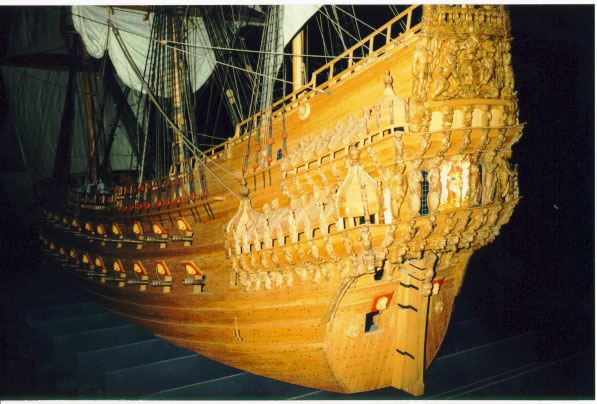 |
Built on islands between Lake Mälaren and the Baltic Sea, ships have always been important to Stockholm -- and Sweden. Given its generally flat terrain and the opportunities water presents for invasion, warships have played a particularly strong role. Stockholm's Djurgården (Animal Park) island is a perfect place to view this relationship: in addition to many other museums and attractions, the island hosts the most popular attraction in all Scandinavia, the Vasamuseet (Vasa Museum).
In 1628, on its maiden voyage, the royal ship Vasa, named in honor of the reigning dynasty, capsized and sank in Stockholm harbor, just two hours after setting sail. It was the most heavily armed, most expensive warship Sweden had ever built to that point, and the sinking was a national catastrophe, dealing a major blow to King Gustavus Adolphus, busy battling Poland and the Holy Roman Empire.
Preserved by the cold waters of the Baltic Sea, it was found by an amateur marine archeologist 328 years later, in 1956, and was raised in 1961. For the next thirty-odd years, an enormous restoration effort reassembled and preserved the huge ship, and a purpose-built building, the Vasamuseet (Vasa Museum), opened in 1995.
This photo shows a large model of the Vasa, used by the museum as a guide in restoration efforts. [The museum is dimly lit, making photos of the Vasa itself quite difficult. Even the museum's own Web site has few photos of the massive ship.] Scanned from a photographic print. © 1997 Kathleen G. Charters
|
|